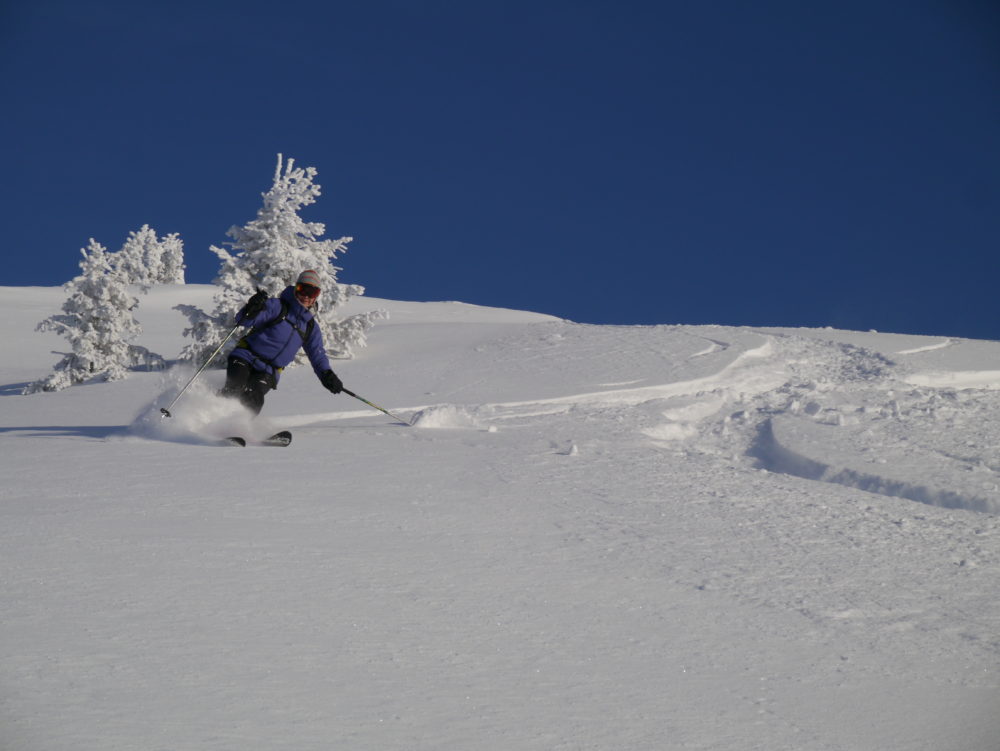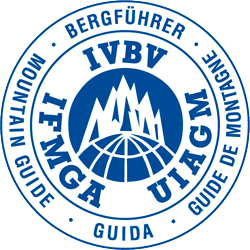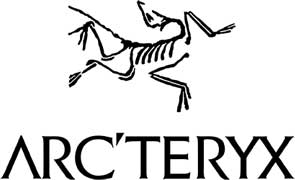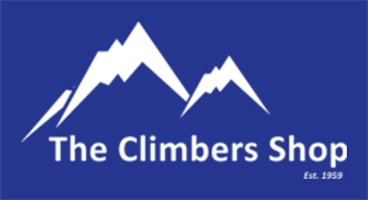Off-Piste Ski Technique: Five Key Focus Points
The transition from skiing on the piste to being an off-piste skier is often a very difficult one.
The piste gives us a very solid platform in which to learn to ski and experiment with our skis. It is a very predictable and dependable medium on which to work our skis, which helps us, progress with our ski technique. However, it can also confine us into a less efficient ski style as we get away with our “bad habits”. Once off the piste any chinks in our amour are mercilessly exposed and this can lead to loss of control, anxiety and a downward spiral in your confidence on skis.
If this sounds familiar, don’t worry all is not lost, stay positive with your skiing!
So what is going wrong, or more importantly, what are the issues we should focus on? I have highlighted five focus points in off-piste skiing and even after 32 years of off-piste skiing, I always keep these in mind, especially when the snow is difficult. The problem is that off the piste we don’t normally have the luxury of a solid platform unless you are skiing perfect spring snow. On powder snow, our skis can feel unpredictable and difficult to control, as we no longer have this solid dependable platform under us.
When life gets tricky on skis, I always refocus on these five points:
1. Being centred on the ski and don’t let go of the “steering wheel”. So all good in saying “being centred” but what does this mean and how do we know when we are there? The skier’s weight should be in the middle of the ski with equal weight on the toes and heel. This is really important. I continually monitor the pressure the base of my foot to try to keep an even pressure from the toes to the heel (a customised innersole can help here). On the piste the tolerance for being balanced at the centre is huge as you have this firm surface to push on but off-piste you are balancing on the powder and it can indeed be a fine line. The ski is designed to work best (with the shortest turning radius) when the balance is on the centre of the ski. It is also good to appreciate that as we put the skis in the fall line of the slope the skier also has to lean forward so that they are perpendicular with the slope (and skis) so to maintain being centred on the ski and not in a vertical position (as when walking). If you remain in a “walking” position, then you will be way back on the ski and you will have the fast long turn. Try to fight your brain and stay centred and balanced on the ski.
So, along with the sensors on the souls of my feet I use my shin as a sensor. I like to think of my shin as “holding” the steering wheel which is the front inner tongue of the boot. When you apply pressure on the front of the boot with the shin by compressing the ankle and bending at the knees will have control to work (turn) the ski. As soon as your shin loses contact with your boot, you will have lost control. Therefore, a big focus during the turn is to keep the shin engaged on the boot and to stay balanced at the centre of the ski. Committing to the fall line when turning can be a scary process and as we have spent much more of our time walking than skiing our mind subconsciously tells us to dig our heels in to slow down as this always works while on foot. Of course, if we are wearing skis digging in our heels only puts our weight to the back of the ski and takes our shins out of contact with the boot so we lose control and make a fast long turn as we are turning on the back part of the ski and not the centre. If you need to raise the toe of the skis to help them move in the powder then lift your toes up and try not to put more weight on your heels, this way you will be much better balanced on the ski.
Stay positive, centred and keep your shins pushing on the boots and your turn will be more likely to be in control and stress free.
2. Focus on the uphill ski. When we learn to ski, we tend to use the downhill ski for support and steering. This works really well on the firm piste but as soon as we take this technique to the soft powder we start to run into problems as the downhill ski sinks into the powder and the skier trips over it. When skiing (on and off-piste actually) it is much more efficient to weight both skis and the type of snow determines the ratio of the weight on each ski. On the piste you can have 100% on the downhill ski and survive the turn (although 60:40 would be optimal) but in powder a 50:50 to 60:40 is a more appropriate ratio. On ice or a firm base 60:40 to 70:30 works well.
Only when we can truly parallel ski can we really make a good transition to skiing off-piste, as the uphill ski needs to be weighted and used in the turn. Try to notice if you lift your uphill ski off the snow during the turn, as this is a dead giveaway that you need to focus on weighting your uphill ski.

3. Knees together. This is a great focus to have not only to help weight the uphill ski but also as for safety. A lot of knee ligaments are injured due to the uphill ski drifting away from the downhill ski and twisting the knee. I always like to ski defensively and keep my knees together. In powder or crust you need to use the skis as a single platform and this can be achieved by keeping the knees together. By locking your knees together you still have room to have your skis slightly apart as this helps with stability. On soft snow (powder etc.), this is essential but on firm snow or ice a wider stance gives better stability and grip.
4. Keep a low profile. Our natural posture is to stand upright as we do when we walk but a low profile is really useful in keeping a low and stable centre of gravity. So when the skiing gets tough I compress my ankles (lifting your toes helps a bit here), bend the knees (of course) and hips to stay low to the snow. Keep your bum over your boots though, don’t sit back. I keep my ski poles on the short side as this encourages me to stay low and stable. Being in an upright position, like standing a pencil on a table, is very unstable. Another advantage of being low is that your body is compressed and you will have a greater range of movement available to you during your turn. I think of it as a transition from riding a tricycle to bicycle or from a tractor to a Ferrari. Carving skis (without ski poles) are a great way to get into this style of skiing.
5. Hands forward. I always start my turn by looking at my downhill hand, as it needs to be in front of me and ready to define the centre of the circle that the skis are going to turn around. When off-piste skiing we always have a rucksack and this extra weight can drag you backwards as well as being thrown back from the previous turn. A quick check that your downhill hand is forward puts you in a stronger position to start your next turn.
As I am writing this, in Leysin now the temperature is -10c and we have just had over a metre of fresh snow, so I think I might just find time to go and focus on a few of these points. I hope that you too will find the time this winter to ski and find some fantastic snow.
I hope that you will be able to join us on one of our ISM ski courses, where we can continually help you with your skiing and ski objectives.
Terry Ralphs 18 January 2016
Related News Articles

Getting Into & Developing Your Climbing
Indoor bouldering is a great place to start if you want to try climbing for the first time. You can…
Read Article
Petzl 'Alpen Adapt' Crampons
A quick look at the Petzl crampons that I'm using at the moment, and how you can very easily mix…
Read Article
Petzl Crampon Compatability
Mix & match the different Petzl crampon sections, to create the best fit for your boots, and adapt to each adventure.
Read ArticlePrussiking Up A Rope
Following the recent articles around crevasse rescue and snow belays, I wanted to finish up by outlining a standard technique…
Read Article



